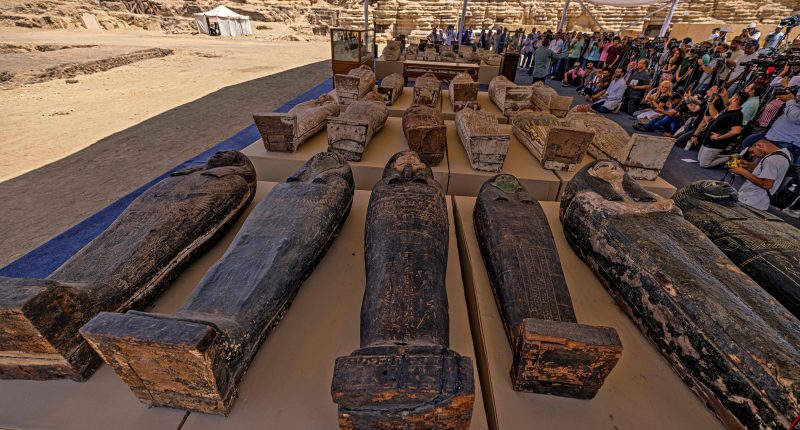Egypt has unveiled a major new archaeological find of 250 sarcophagi, 150 small bronze statues and other antiquities at the Saqqara necropolis.
According to the country’s antiquities authorities, the artifacts were recently unearthed at the famed necropolis of Saqqara near Cairo.
The artifacts were showcased at a makeshift exhibit at the feet of the Step Pyramid of Djoser in Saqqara, 24 kilometers (15 miles) southwest of the Egyptian capital.
According to Mostafa Waziri, head of the Supreme Council of Antiquities, the find includes 250 painted sarcophagi with well-preserved mummies inside, as well as 150 bronze statues of ancient deities and bronze vessels used in rituals of Isis, the goddess of fertility in ancient Egyptian mythology, all from the Late Period, about 500 B.C.
A headless bronze statue of Imhotep, the chief architect of Pharaoh Djoser who ruled ancient Egypt between 2630 B.C. and 2611 B.C was also displayed.
The artifacts will be transferred for a permanent exhibit at the new Grand Egyptian Museum, a megaproject still under construction near the famed Giza Pyramids, just outside Cairo.
The Saqqara site is part of a sprawling necropolis at Egypt’s ancient capital of Memphis that includes the Giza Pyramids and the smaller pyramids at Abu Sir, Dahshur, and Abu Ruwaysh. The ruins of Memphis have designated a UNESCO World Heritage site in the 1970s.
Egypt has been heavily promoting recent archaeological finds, hoping to attract more tourists to the country.
Its tourist sector, a major source of foreign currency, suffered from years of political turmoil and violence following the 2011 uprising that toppled autocrat Hosni Mubarak.
By: Isaac Clottey





